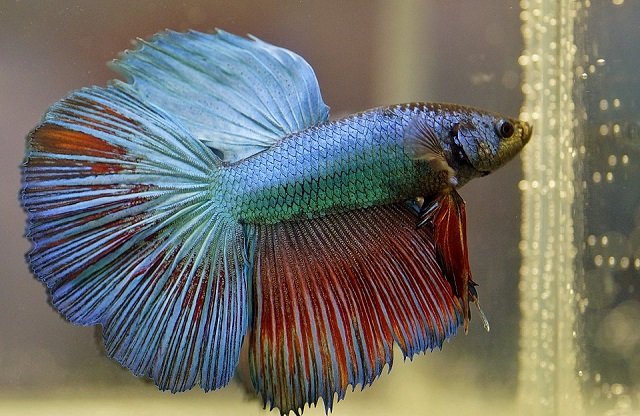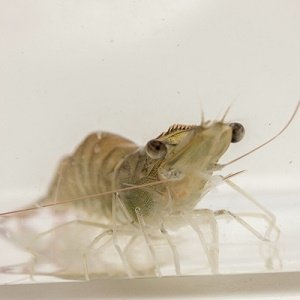
Gill diseases represent one of the most significant threats to the global salmon farming industry, directly impacting fish welfare, growth, and operational profitability. Typically, these issues are detected late, once clinical signs are visible and losses have become inevitable. However, a recent study conducted on commercial Atlantic salmon (Salmo salar) farms in Scotland opens a new door: using artificial intelligence (AI) to interpret fish behavior as a sophisticated early warning system.
The research, published in Aquaculture Science and Management by scientists from the University of Stirling’s Institute of Aquaculture and Observe Technologies, demonstrates that subtle changes in the group behavior of salmon—imperceptible to the human eye daily—can predict the onset of gill health problems. This approach, framed within the concept of precision aquaculture, combines underwater cameras with computer vision algorithms to offer a non-invasive window into the welfare status of an entire pen.
Key findings
- An artificial intelligence (AI) system analyzing videos from commercial pens can quantify the group behavior of Atlantic salmon.
- A significant increase in fish “activity” (defined as tighter shoaling and clustering in the center of the pen) was detected two months before gill health was compromised.
- The statistical model identified proliferative gill disease (PGD) as the primary driver of this behavioral change, ranking it above temperature or amoebic gill disease (AGD).
- This behavioral shift preceded a decline in appetite (lower specific feeding rate) and an increase in mortality, positioning it as a leading early warning indicator.
- This non-invasive technology offers great potential for precision aquaculture, enabling producers to act proactively to safeguard fish welfare.
The challenge of a silent disease
The gills are vital organs for respiration and osmoregulation in fish. When their function is compromised by conditions like proliferative gill disease (PGD), fish suffer from respiratory distress and severe stress. PGD is a complex, often multifactorial condition that causes proliferative changes in the gill epithelium and can be triggered by a combination of pathogens, parasites, and environmental conditions, especially during warmer months. Its traditional field diagnosis relies on the visual assessment of a small sample of fish, a method that may not reflect the true condition of thousands of individuals in a pen.
Using Artificial Intelligence to see the invisible
To overcome these limitations, researchers implemented a continuous monitoring system at two commercial aquaculture sites in Scotland. Video cameras were installed in the pens, recording uninterruptedly during daylight hours over several months.
What does the algorithm measure?
The video footage was processed by an AI algorithm designed to quantify the fish group’s behavior into a single parameter called “activity.” It is crucial to understand that this “activity” is not merely swimming speed. It is a composite metric that integrates three key behavioral characteristics:
- Fish Abundance: The number of fish detected per video frame.
- Swimming Speed: The average movement of the group.
- Shoal Cohesion: The distance between individuals, indicating whether they are swimming in a dispersed or tightly grouped manner.
This approach provides a holistic and automated view of the general state of the population within the pen, without handling or stressing the fish.
A behavioral shift that predicts disease
The study was conducted during the summer of 2023, a period when gill health issues emerged at both farms. The data revealed a clear and surprising pattern.
A drastic increase in “activity”
Two months before gill problems became evident, according to farm records, the average “activity” level of the fish was stable, at around 25%. However, as gill health began to deteriorate, activity rose significantly, reaching averages of 43.6% at Farm A and 32.6% at Farm B. This increase in “activity” was primarily due to greater shoal cohesion. The fish began to group more compactly and migrate toward the center of the pen—a typical defense behavior in response to stressors. This change was rapid and pronounced, occurring weeks before other indicators, such as mortality, showed significant alterations.
Stay Always Informed
Join our communities to instantly receive the most important news, reports, and analysis from the aquaculture industry.
PGD as the primary trigger
Using an advanced statistical model, the researchers analyzed which factor was most closely related to this behavioral change. The results were conclusive: proliferative gill disease (PGD) was the main driver of the increased activity. Other variables, such as water temperature, amoebic gill disease (AGD), or the presence of sea lice (L. salmonis) showed no significant correlation with the observed behavioral disruption. Furthermore, this stress-related behavior coincided with a decrease in the specific feeding rate (SFR) and, subsequently, with an increase in mortality rates, especially at the farm with the most severe gill health scores.
Implications for a more proactive salmon farming industry
The findings of this study have significant practical relevance for the industry. They demonstrate that monitoring group behavior with AI is a powerful, non-invasive tool that functions as an early warning system. Unlike traditional operational welfare indicators (OWIs), which often detect a problem only after it has advanced (e.g., external lesions or mortality), behavior offers direct insight into the subjective experience and stress state of the fish in real-time.
This technology would allow producers to:
- Detect sub-clinical stress before it manifests as severe disease or mortality.
- Intervene proactively by adjusting management practices, applying preventive treatments, or modifying feeding strategies.
- Improve animal welfare by reducing exposure to long-term stressors.
- Optimize decision-making based on objective, continuous data from the entire population rather than small, isolated samples.
Conclusion: Looking toward the future of precision aquaculture
As climate change raises sea temperatures, the prevalence of agents causing gill diseases is expected to increase. In this context, adopting advanced monitoring technologies is not a luxury but a necessity to ensure sustainability and welfare in aquaculture. This study validates the use of artificial intelligence and computer vision as an effective tool to transform health management in salmon farming. By learning to “listen” to what the fish are telling us through their behavior, the industry can shift from a reactive to a predictive and proactive approach, ensuring a healthier future for both the salmon and the sector.
Contact
Sonia Rey Planellas
Institute of Aquaculture, Faculty of Natural Sciences, University of Stirling
Stirling, UK
Email: sonia.reyplanellas@stir.ac.uk
Reference (open access)
Burke, M., Nikolic, D., Fabry, P. et al. Precision farming in aquaculture: assessing gill health in Atlantic salmon (Salmo salar) using a non-invasive, AI-driven behavioural monitoring approach in commercial farms. Aquac. Sci. Manag. 2, 15 (2025). https://doi.org/10.1186/s44365-025-00020-8
Editor at the digital magazine AquaHoy. He holds a degree in Aquaculture Biology from the National University of Santa (UNS) and a Master’s degree in Science and Innovation Management from the Polytechnic University of Valencia, with postgraduate diplomas in Business Innovation and Innovation Management. He possesses extensive experience in the aquaculture and fisheries sector, having led the Fisheries Innovation Unit of the National Program for Innovation in Fisheries and Aquaculture (PNIPA). He has served as a senior consultant in technology watch, an innovation project formulator and advisor, and a lecturer at UNS. He is a member of the Peruvian College of Biologists and was recognized by the World Aquaculture Society (WAS) in 2016 for his contribution to aquaculture.




